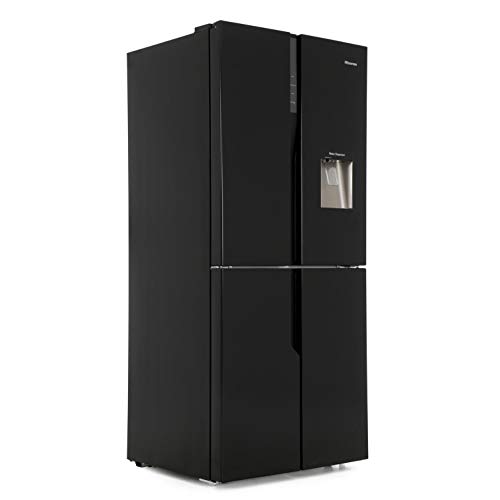The Best Fridges And Freezers Tricks To Rewrite Your Life
페이지 정보

본문
Understanding Fridges and Freezers: The Essential Kitchen Appliances
Refrigerators and freezers are 2 of the most important home appliances in modern-day kitchen areas. These devices serve a crucial role in food preservation and waste decrease by making sure that disposable items remain fresh and safe for intake. This post delves into the numerous kinds of fridges and freezers, their functionalities, and important factors to consider for selection and upkeep.

Kinds of Refrigerators
The market offers a variety of refrigerator types, each created to meet various customer needs. Below is a list of the most typical types of fridges:
Top-Freezer Refrigerators
- Most common type.
- Freezer compartment is located above the refrigerator section.
- Normally more inexpensive and energy-efficient.
Bottom-Freezer Refrigerators
- Freezer lies at the bottom.
- Allows much easier access to fresh products at eye level.
- Frequently features pull-out drawers for better company.
Side-by-Side Refrigerators
- Refrigerator and freezer areas are surrounding.
- Ideal for narrow kitchen areas and permits simple access to both compartments.
- Frequently comes with water and ice dispensers.
French Door Refrigerators
- Combines a bottom freezer with double doors at the top.
- Offers sufficient storage and trendy designs.
- Often consists of functions like temperature-controlled drawers.
Compact Refrigerators
- Smaller sized size perfect for limited areas.
- Typically used in dormitory, small apartments, or as secondary best Fridges.
Table 1: Comparison of Refrigerator Types
| Type | Advantages | Disadvantages | Common Size |
|---|---|---|---|
| Top-Freezer | Affordable, energy-efficient | Less practical access to the freezer | 14-30 cu. ft. |
| Bottom-Freezer | Easier access to fresh food | Freezer can be harder to arrange | 19-30 cu. ft. |
| Side-by-Side | Easy access, water/ice dispenser | Narrow vs. storage space | 22-30 cu. ft. |
| French Door | Trendy, spacious, arranged | More expensive | 20-30+ cu. ft. |
| Compact | Space-saving, portable | Limited storage | 1.7-5.5 cu. ft. |
Types of Freezers
Freezers are a similarly crucial device for food preservation. They are available in different designs designed to fit different family requirements. Consider the following types:
Upright Freezers
- Operate like a basic refrigerator with vertical storage.
- Simpler to organize with racks and compartments.
Chest Freezers
- Big, horizontal style generally using more storage space.
- Maintains temperatures much better during power interruptions.
- More energy-efficient than upright designs.
Portable Freezers
- Compact systems ideal for outdoor activities or little spaces.
- Typically utilized for camping trips or as short-term storage.
Table 2: Comparison of Freezer Types
| Type | Advantages | Downsides | Typical Size |
|---|---|---|---|
| Upright Freezer | Easier to arrange | Less energy-efficient, more flooring space | 5-20 cu. ft. |
| Chest Freezer | Holds more items, energy-efficient | Harder to organize | 5-25 cu. ft. |
| Portable Freezer | Compact and flexible | Limited storage capability | 1-10 cu. ft. |
Key Features to Consider
When selecting a fridge or freezer, consumers should keep in mind numerous functions that can enhance functionality:
- Energy Efficiency: Look for models with the ENERGY STAR certification to save money on electrical energy costs.
- Storage Capacity: Evaluate storage needs based upon family size and consuming routines.
- Temperature Control: Some home appliances provide digital controls for precise temperature level settings.
- Adjustable Shelving: Customizable shelving enables optimum organization.
- Water and Ice Dispenser: Offers convenience however can use up valuable space inside.
- Sound Level: Sound scores can influence comfort, especially in open-concept homes.
Advantages and disadvantages of Having a Fridge and Freezer
While fridges and freezers are essential innovations, they also have particular advantages and disadvantages:
| Pros | Cons |
|---|---|
| Maintain food life expectancy and reduce waste | Need routine maintenance |
| Permit bulk buying and meal prepping | Can be pricey to buy and run |
| Offer benefit and fast access to food | Inhabit significant cooking area space |
Maintenance Tips
To ensure durability and optimum performance of fridges and freezers, think about the following maintenance tips:
- Regular Cleaning: Clean the exterior and interior regularly to prevent accumulation of dirt and germs.
- Inspect Seals: Inspect door seals regularly for leakages to preserve performance.
- Temperature level Settings: Keep the fridge at 34-38 ° F and the freezer at 0 ° F for optimal food preservation.
- Defrost as Needed: Chest freezers must be defrosted routinely to keep efficiency.
- Clear Air Vents: Ensure that air flow isn't obstructed to enhance energy efficiency.
FAQs About Fridges and Freezers
Q1: How long can food be saved in a freezer?A: Most foods can be kept in a freezer for numerous months. Meats and poultry often last 4-12 months, while veggies can last as much as 8-12 months.
Q2: How often must I clean my fridge and freezer?A: It is a good idea to clean your fridge and freezer every 3 to 6 months, or as required when spills occur. Q3: Can I put hot food straight in the fridge?A: It is advised to cool hot food to room temperature before placing it in the fridge to avoid
raising the temperature inside the home appliance. Q4: Why is my fridge running constantly?A: This could be due to a malfunctioning thermostat, clogged coils, or door seals that aren't working properly. Fridges and freezers are vital
possessions to modern households, offering necessary services for food storage and conservation.
Understanding the different types, functions, and upkeep requirements can assist consumers pick the right home appliances for their needs and maximize their performance. Accepting energy-efficient designs not only supports sustainable practices but also adds to considerable savings on utility bills, making informed choices more crucial than ever.
- 이전글You'll Never Guess This Car Keys Replaced Ampthill's Tricks 25.08.13
- 다음글The Best Robot Vacuum Cleaners Tricks To Transform Your Life 25.08.13
댓글목록
등록된 댓글이 없습니다.